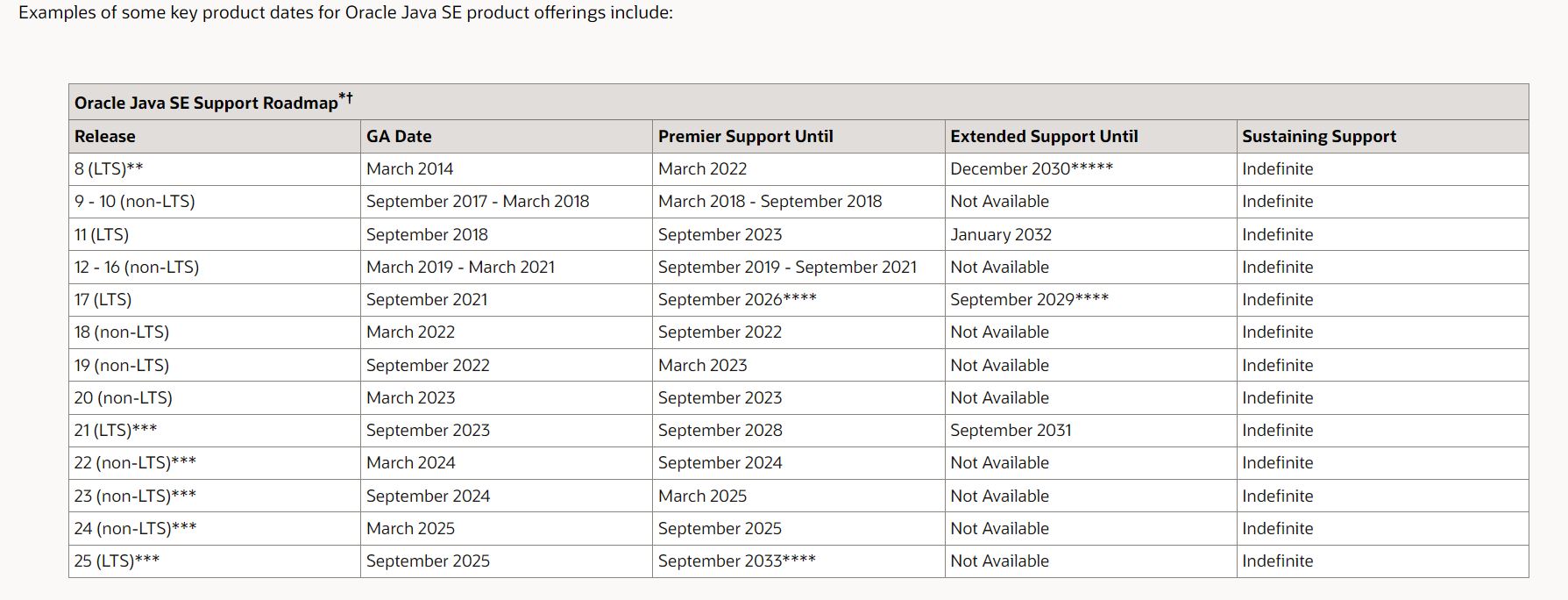
98% of organizations surveyed still use Java in their software applications or infrastructure. (Image by Shutterstock)
Oracle licensing and pricing changes see businesses explore Java alternatives
- According to a survey by Azul, 98% of organizations still use Oracle Java in their software applications or infrastructure.
- 74% of organizations said they also use a JDK from at least one OpenJDK provider
- However, Oracle’s changes in pricing and licensing are seeing some moving to alternatives.
While Java remains one of the most used programming languages, changes brought about by Oracle have had an impact on users. While Oracle does not own Java in the sense of owning the programming language itself, it is the current steward of Java Standard Edition (Java SE) and Java Enterprise Edition (Java EE) technologies, which are widely used for building enterprise-scale applications.
Oracle acquired these technologies when it bought Sun Microsystems in 2010. Since then, Oracle has been responsible for the development and support of Java SE and Java EE. It’s important to note that Java is an open-source programming language, and the development of the language involves contributions from a large community of developers and organizations, not just Oracle.
Oracle has been making changes to its licensing and pricing policies, which are starting to impact Java users. For example, support for Java 6 and 7 has ended, while Oracle will continue to release new updates on its public websites for individual users or for non-production, development, or testing purposes.
However, commercial use of those public releases in production is restricted and requires a commercial license. This is being accomplished through a change in the license agreement for all Java SE 8 Updates released after January 2019.
“Oracle provides Customers with Oracle Premier Support on Oracle Java SE products as described in the Oracle Lifetime Support Policy. For product releases after Java SE 8, Oracle will designate only certain releases as Long-Term-Support (LTS) releases. Java SE 8, 11, 17 and 21 are LTS releases. Oracle intends to make future LTS releases every two years, meaning the next planned LTS release is Java 21 in September 2023.
For the purposes of Oracle Premier Support, non-LTS releases are considered a cumulative set of implementation enhancements of the most recent LTS release. Once a new feature release is made available, any previous non-LTS release will be considered superseded,” said Oracle in its Java Supporting Roadmap.

Examples of some key product dates for Oracle Java SE product offerings. (Source – Oracle)
Despite Oracle ending support for Java 6 and 7, Azul – a platform company that is 100% focused on Java – continues to provide timely security updates and ongoing support for Java 6 and Java 7. Running older versions of Oracle Java in production poses a potential risk that can be remedied by simply switching the JVM from Oracle to Azul.
Using Azul support for older versions of Java also manages the cost and business disruption of upgrading applications to later versions of Java, and lets the business upgrade applications at their own pace rather than in response to Oracle’s support policy.

Azul is a platform company that is 100% focused on Java. (image generated by AI)
Alternatives to Oracle Java
According to Azul’s State of Java Survey and Report, 98% of organizations surveyed still use Java in their software applications or infrastructure, and 57% of those organizations indicate that Java is the backbone of most of their applications. When including Java-based frameworks, libraries and other languages that use the Java Virtual Machine (JVM), the data shows that Java continues to play a fundamental role in today’s enterprises.
The survey studied responses from more than 2,000 Java users globally to unveil unparalleled insights into how Java holds its ground in today’s dynamic technology environment and its impact on enterprises large and small.
The report also indicated that 82% of organizations using Oracle Java said they are concerned about the new Java SE Universal subscription pricing introduced in January. This is the fourth major licensing and pricing change in four years. As such, 72% of respondents said they were considering open-source alternatives such as OpenJDK, and of those who weren’t, 14% said it hadn’t occurred to them that they could.
Despite this, Oracle remains a dominant player in the Java market. However, 74% of organizations said they also use a JDK from at least one OpenJDK provider. Around 60% of companies have chosen an OpenJDK distribution over Oracle Java SE.

Oracle Java fees have led to frustration in the market.
Why Java still plays a critical role in organizations
Despite the availability of a variety of programming languages today, 90% of the survey respondents said they are still using Java in a cloud environment. As the cloud landscape transforms, organizations are continuing their advance to the cloud for scalability, flexibility, productivity, and agility – yet cost and security remain two of the leading challenges.
Many organizations say they’re not fully utilizing the cloud. Given the economic challenges today, 95% of organizations have taken steps to lower their cloud costs in the past year. And to reduce public cloud costs, 46% of businesses are taking advantage of a high-performance Java platform to use cloud resources more efficiently.
According to Jevin Jensen, research vice president of Intelligent CloudOps at IDC, enterprises often don’t use all the cloud computing they pay for due to the over-provisioning of virtual servers required to accommodate spikes in demand from ultra high-performing applications and those where end-user experience is paramount. Jensen pointed out that this creates challenges for IT teams facing a difficult budget environment that requires more efficient use of resources.
“Running Java applications and infrastructure with a faster and more efficient JVM can provide superior performance, consistency, and the capacity to address these challenges, gaining tangible business results today,” said Jensen.
Apart from the cloud, there are also security considerations for businesses. Given the widespread impact of a single compromised Java-based logging library (Log4j), there is more emphasis on the ongoing threat of security vulnerabilities in Java applications. Almost 80% of respondents reported being affected by Log4Shell, while nearly half were impacted by the extra time required by their engineering teams to address the vulnerability, and 30% were impacted by attempts to exploit the vulnerability.
“As the State of Java Survey & Report data reveals, Java’s enduring prominence and role in helping enterprises to thrive is undeniable, and high-performance JVMs are playing a pivotal role in meeting application service levels and cloud cost optimization. The choices businesses make around Java directly impact their operational efficiency and the bottom line,” commented Scott Sellers, co-founder and CEO at Azul.
For Sellers, the concerns raised over Oracle’s recent Java licensing and pricing changes also highlight a need for stability and trust in the technology partnerships that businesses form with their strategic vendors.
“Our sole focus is to champion this trust, ensuring that organizations of all sizes can continue to innovate, optimize and grow with the best Java solutions and strategies,” he explained.
READ MORE
- Safer Automation: How Sophic and Firmus Succeeded in Malaysia with MDEC’s Support
- Privilege granted, not gained: Intelligent authorization for enhanced infrastructure productivity
- Low-Code produces the Proof-of-Possibilities
- New Wearables Enable Staff to Work Faster and Safer
- Experts weigh in on Oracle’s departure from adland




